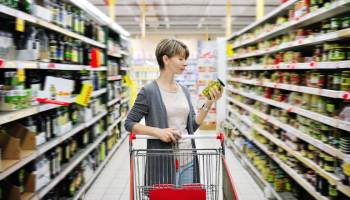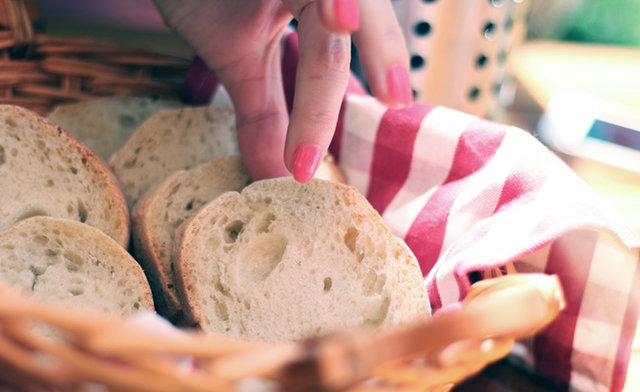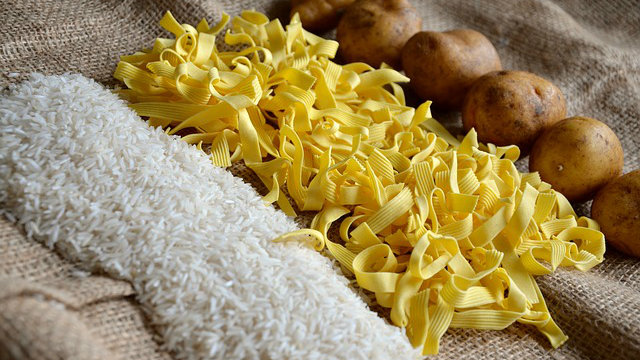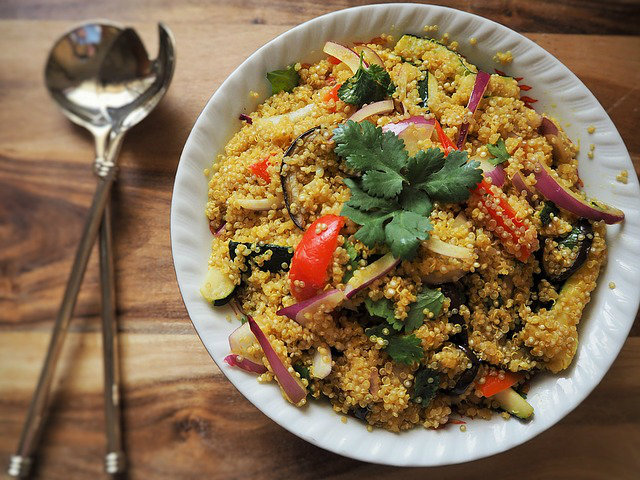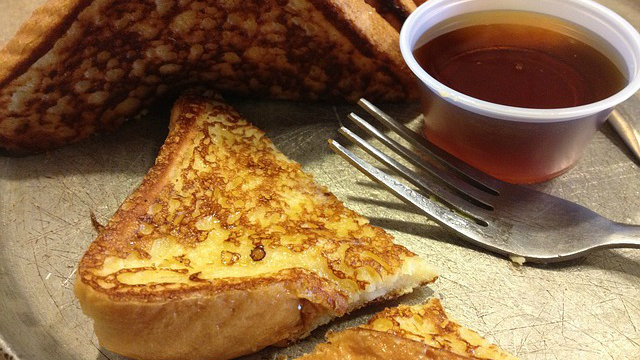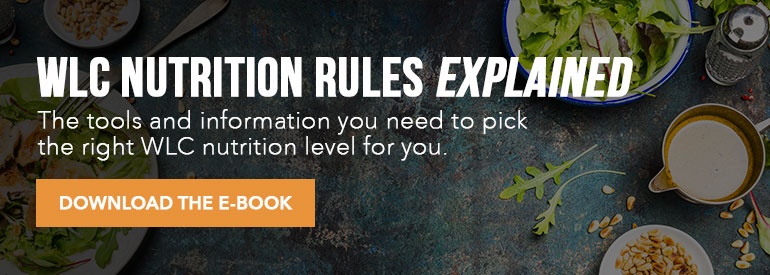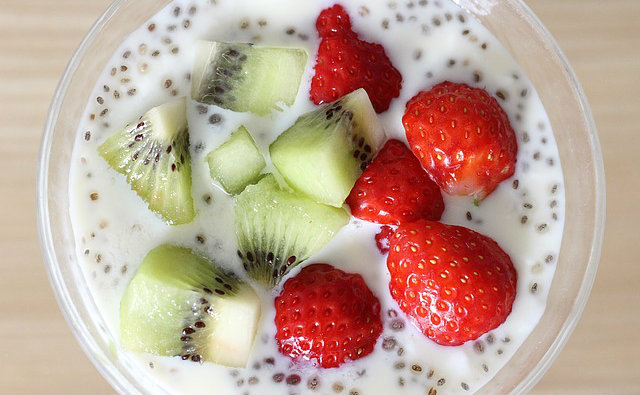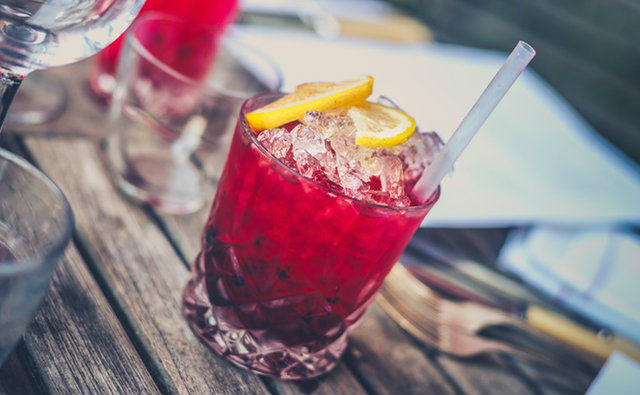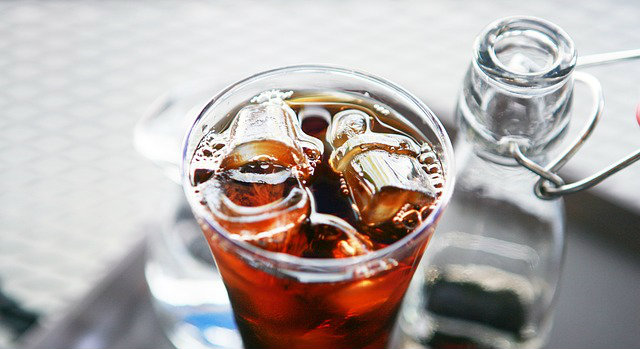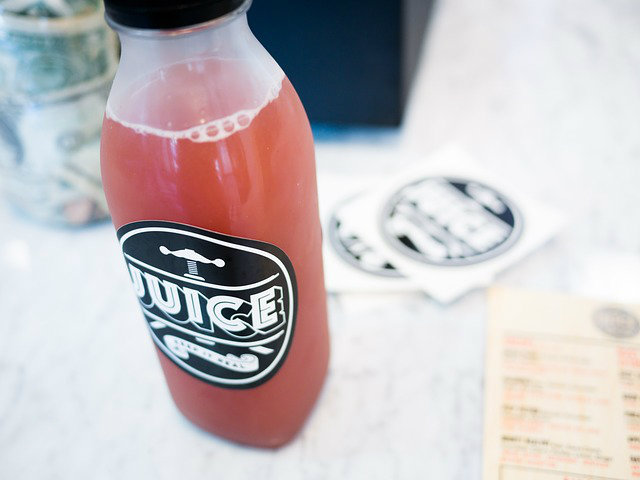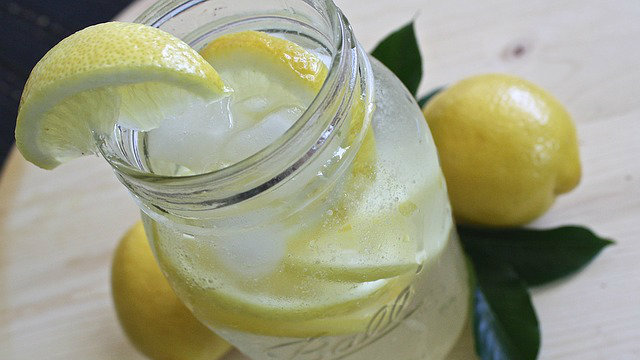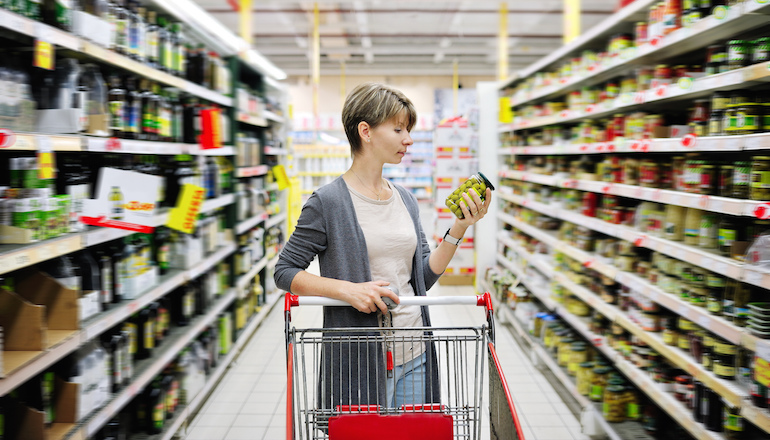 Reading Time: 15 minutes
Reading Time: 15 minutesWe’ve become used to fad diets giving us lists of things we can and cannot eat for seemingly no reason. This makes it impossible to transfer into everyday life. If you don’t know why you do something, you’re less likely to do to it.
And without this why, it’s easy to have an emotional response to rules that deprive you of your favorite things. How dare you tell me I can’t have a glass of red wine every night? But it has antioxidants! No honey? But it’s natural!
Unlike fad diets, the Whole Life Challenge food rules have legitimate and science-based reasons behind them. You’re going to notice a few common threads throughout the rules:
- Does it spike your blood sugar or insulin?
- Does it irritate your gut?
- Is it real food?
So to put this all in context and give you the answers to your burning questions about things like wine, bread, honey, and cheese. Here are the whys behind the “non-compliant” list.
Topic #1: Grains and Starches
So much controversy over such a tiny thing. So let’s cut to the chase. You know who does really well with grains? Birds. Birds do. We’re not birds. For us human folk, grains are a common irritant source. We don’t digest them very well. Not only that, but there is a pretty massive and almost immediate insulin response when we consume refined grains. What does that mean?
You’ll actually die if sugar stays in your bloodstream. It has to be gotten out, and fortunately your body has developed a way to do that. When your blood sugar spikes, your body produces a bunch of insulin to bring it down. It comes down hard, and you crash. After you crash, you’re hungry again.
That’s not all! The modern grain crop has been so altered to make it low cost and high yield, that it’s an entirely new group of grain all together — and no one ever had to test if it was good for people to eat. We are the lab rats in a giant experiment. Lucky us! Nutritionally, the new strains of grains are high in sugar and starchy carbohydrates without offering much nutrient-wise that we can’t get from other plant or animal sources.
I highly recommend some personal investigation into this topic, but here’s the low-down on a few specific food items:
- Soy: This could be a whole post on its own. We have been hosed into thinking soy is the miracle health food. Since we don’t have all day, here are the Cliffs Notes. Soy is highly processed (mashed, deodorized, bleached) to get from the bean to whatever shape or consistency you buy at the store. Aside from almost all of it being genetically modified, it also contains chemicals that impair thyroid function, mimic estrogen, promote clotting, and really a whole mess of nasty stuff. Not only does unfermented soy provide us with all of those lovely toxins, it contains a ton of phytic acid, a substance that actually hinders your ability to take in essential minerals (zinc, magnesium, copper, iron and zinc). Seriously, Google it.
- Rice: Rice has a very high carb and starch content without much by way of nutrients. While it is often tolerated better than other grains since it doesn’t contain gluten, for WLC we want to eliminate or limit any carb/starch-dense items that don’t also come packed with nutrition. Try cauliflower “rice” as a substitute.
- Potatoes: Drum roll, please…blood sugar! White potatoes that are high in starch are one of the highest foods on the glycemic index (measure of impact on blood sugar). A baked Russet potato is higher on the glycemic index than sugar! Also, the way you prepare your potatoes matters. Fried pieces of sweet potato are still a fried food.
- Alternative Flours: Take a dried bean or legume and grind it into a powder. Let’s use our noggins here for a moment. Would you eat dried beans? Dried rice? No? Don’t eat these, either. The insulin response is not the same as if you were to eat a bowl of cooked beans or rice. It’s ground so fine that you’re eating way more than you would if it were whole, and since it’s a powder, it goes straight to the ol’ bloodstream.
- Bread: Bread is made of wheat. Wheat is a grain. Wheat is a huge inflammation trigger for many, and it can manifest in a plethora of seemingly unrelated symptoms. When healing the gut and going to real food, this is the first thing to go. Most gluten-free versions have less than ideal ingredients (often sugar and starches), so either make your own or suck it up, buttercup.
- Pasta: This includes all of that magical gluten-free pasta made from black beans, brown rice, or quinoa for the reasons listed in “alternative flours.” Plain and simple: no pasta! Don’t look for loopholes, look to make changes. Buy a spiralizer and use sweet potatoes or zucchini as a sauce-to-mouth vehicle that also provides nutrients.
- Corn: On the Performance level, we’re really fine tuning. Things that may be okay, but not optimal, are given the heave-ho. Get rid of any item that could cause digestive, insulin, or gut health issues. Sugary, starchy grains gotta go! Not to mention a large percentage of the U.S. corn crop is genetically modified. All things considered, those on Kickstart and Lifestyle who consume it in small amounts will likely be just fine.
- Quinoa: On Performance, we’re kicking out all grains. The devil is in the details. For Lifestyle and Kickstart, quinoa is a better alternative to a gluten-containing grain and is a moderate source of protein. Even so, the bioavailability of protein in quinoa (bioavailability is how well we absorb a given items nutrients. Just because a package of quinoa may say 9g of protein, does not mean you actually get/use those 9g), is less than that in animal products (which is the best source for complete, readily available protein) or non-grain plant-foods (Brussels sprouts, sweet potato, and leafy greens).
Topic #2: Sugar and Sweeteners
I want to make something very clear: sugar is sugar is sugar. Maple syrup, raw honey, agave, raw sugar, whatever — it’s all sugar. It’s all sweet. Yes, some are less impactful on your blood sugar. Yes, some also come with some benefits (i.e. honey and maple syrup). So why eliminate these, as well?
- It’s all sugar. Sugar causes a spike in blood sugar and insulin release and can cause insulin resistance leading to diabetes. It is addictive. It’s also believed to cause cortisol levels to increase (that’s our stress hormone), impair the immune system, and promote fat storage. It’s pretty common sense to eliminate when attempting to optimize your health.
- Sweet perpetuates a cycle of sweet cravings. When we eat concentrated sweets, it gives us a big boost of energy and happy feelings (dopamine!). What happens when that goes away? We want more. We break that crave by getting rid of the source. Even if it’s artificial.
- It’s a game. This is a challenge. It’s not about finding loopholes. It’s not supposed to be what you’re already doing. I know a lot of people who have said “Yeah, I need to change stuff up, but I can’t give up my maple syrup every day.” Guess what? If you eat how you always have, you’ll look, feel, and perform how you always have. We can’t eat like we’re maintaining, if we’re not in the place we want to maintain. You can’t make progress without change.
Here’s a list of tricky little words you might see on labels. Don’t be fooled — they’re all sugar: granulated sugar, brown sugar, powdered sugar, cane sugar, turbinado, agave, honey, evaporated cane juice, high fructose corn syrup, maltodextrin, barley malt, brown rice syrup, dextrose (all of the -ose words: fructose, sucrose, maltose, glucose), molasses, fruit juice concentrate, sucanat.
- Artificial Sweeteners: A major issue with sweeteners like aspartame, aside from a list of possible side effects that come from slugging chemicals, is that it tricks our bodies. You drink something sweet, your body says “There’s sugar coming! Get ready everyone!” Alas, no sugar, nutrients, or calories arrive, and your body is left shouting “Hey! Where’s that stuff you just promised?” So you get hungrier. You eat more. You store it away so your body doesn’t get tricked again.
- Stevia: Stevia is a plant (remember: real food) whose leaves have a sweet taste. Raw stevia provides a completely natural sweetness by way of what grows from the ground without any of the artificial gook. Even stevia can help to perpetuate sweet cravings, though, so be careful! (Also, be sure to read your labels: some stevia products contain sugar and aren’t pure stevia.)
- Coconut sugar and nectar: These are allowed in moderation on the Kickstart and Lifestyle levels due to their lower impact on our blood sugar. But they’re still sugar and should not be eaten with abandon.
Topic #3: Dairy
Dairy is another common irritant for many people, and more often than not they don’t even know it. Cutting it out for a solid period of time allows the gut to heal. This means when you reintroduce it, you may discover it gives you no reason to fret — or that you should’ve been avoiding it all along.
- Milk: The pasteurized stuff we get in stores embarrasses its real, raw counterpart. It’s label might say there’s protein, carbs, and fat, but the nutrient density and quality is pretty disappointing.
- Cheese: No dairy. Cheese is dairy. I know your magazine said it’s a good snack, and for some, it is. For now, skip it. Even goat cheese. (Note: cottage cheese is allowed on Kickstart and Lifestyle, and we’d prefer you pick the ones with the live cultures.)
- Butter: With butter, we get the goodness of the milk fat (vitamins K2, A and E, metabolism boosting butyric acid, and beta-carotenes to name a few) without the lactose and casein that are often the cause of irritation. Mind you, these benefits are greater in grass-fed butters like Kerrygold (you’ll notice quality butter from pastured cows is a brighter yellow than the other stuff).
- Yogurt: Fermenting dairy helps get rid of that casein and lactose mentioned above, and as such it is allowed on Kickstart and Lifestyle. Fermented foods aid digestion and help heal the gut. Fermentation also helps get rid of that pesky phytic acid and improve bioavailability of nutrients. Be mindful of added ingredients, though! No Dannon Fruit on the Bottom!
Topic #4: Alcohol
This is the toughest part for many people. Alcohol is a part of our culture, and a tool many of us use to wind down at the end of a long day. But if your goal is to heal your gut, lose excess fat, and increase performance, alcohol should be avoided until you are in a place of maintenance, at which point it can be reintroduced in moderation. Moderate alcohol can be part of a healthy diet. In the Challenge, you’ll learn what “moderate” actually means.
Why is alcohol bad for weight loss? Well, your liver supports your metabolism. When there is alcohol or toxins that need to be filtered, your liver goes code-red to take care of those first before you start burning fat (usually 72 hours). That’s why if you’re only drinking twice a week, you may still find yourself stalled when it comes to body composition.
On top of that, alcoholic drinks are generally empty sugar and carbohydrates with little nutrition. They tend to spark cravings for crappy food and make the next morning less than ideal or productive. If you’re trying to heal, lean out, de-bloat, or lose fat, you need to cut the booze. Plain and simple.
Sorry. I wish I had better news. It was a hard truth for me, so I know it sucks to hear. That being said, for you Kickstart-ers and Lifestyle-ers who are permitted that glorious limited drinking, all alcohol is not created equal:
- Beer: It hurts my heart to say this, but beer isn’t conducive to promoting gut health and optimal body composition. I am a lover of the barley-yeast-malt-water miracle, so this pains me. If you are going to have beer during/after the Challenge, go for a quality craft beer (better ingredients, generally no fillers, often organic or non-GMO) or something gluten-free. For the WLC, though, beer is a “no” even when alcohol is allowed.
- Wine and Spirits: For those on Lifestyle and Kickstart, some low-glycemic, and gluten-free spirits and wines: tequila, many rums, and vodka made with grapes or potatoes. Mixed with simple lemon or lime juice, club soda, or even coconut water, these make for a tasty cocktail that won’t send you off the rails. When it comes to wine, the drier the better. Common sense tells us the sweeter the wine, the more sugar. Chardonnays, sauvignon blancs, pinot gris, cabernet sauvignon, malbec, and pinot noir are all lower sugar/drier options. Even a brut or extra brut champagne works.
- Live Kombucha: The exception to the rule for all levels (but be mindful of ingredients — fruit juice is still a no-no). Kombucha is a raw, fermented, probiotic-laden, carbonated tea. Its benefits were being utilized as far back as 200BC in the Qin Dynasty. Yeah, I went ancient Chinese knowledge on you. I’m a big fan of putting some in a wine glass to enjoy at the end of the day. Gets me some probiotics and mimics the act of having a glass of wine. Just as relaxing (okay, almost) without the hangover.
Topic #5: Artificial Ingredients
A lot of chemical and processed things get added to packaged foods for a number of reasons. Most of these reasons have to be with making the food more palatable since it’s coming out of a box. Chemical thickeners, flavor enhancers, colors, and flavors like these get thrown in:
- MSG: Short for monosodium glutamate, is a flavor enhancer best known for its use in Chinese food. It makes processed foods taste and smell better. It’s been linked to a host of problems, many neurological.
- Nitrates and Nitrites: Nitrates do occur in real food such as spinach and celery, and they are a natural part of the diet, but most often the synthetic version is used to preserve the taste and color of meats. When synthetic nitrates are added to food, they convert to nitrites. When nitrites are exposed to heat, they can be carcinogenic. Nitrates in your vegetables that occur naturally are fine. Nitrates made in a lab and added to meat for color preservation are not fine.
- Artificial Colors and Flavors: I think the name says it all. Artificial colors and flavors. Many we have in the U.S. are banned in other countries due to safety concerns. They’re used in tons of packaged foods. They make ugly, tasteless food look and taste appealing. Possible links to behavioral issues like ADHD are a concern. Artificial flavors are chemically derived to create the desired flavor because, frankly, it’s cheaper.
- Benzoates: These synthetics are typically added as a preservative to increase shelf-life. I know that sounds appealing, but food shouldn’t last six years. When benzoates are exposed to light or heat, they can react to ascorbic acid (vitamin C) and form benzene — a carcinogen. In 2000, the World Health Organization reported studies linking benzoates with asthma, hives, and other allergy-like reactions.
- Hydrogenated Oils and Trans Fats: Hydrogenation takes an oil that is liquid at room temperature, then heats it and adds chemicals that change the molecular structure in order to make it a solid with a very long shelf life. Think Crisco. It’s a vegetable oil, but it’s white and solid at room temp and lasts for decades. We’re trying to kick processed junk and in terms of processed foods, these are way up there on the “absolutely avoid” list. Hydrogenation is how we get trans fats. The health concerns are so great that many food manufacturers have actively stopped using them, although they’re not banned, so you still need to keep an eye out. Look for “partially hydrogenated” on the label. These oils and fats are associated with increased blood pressure, heart disease, inflammation, triglycerides (a type of fat found in the blood), and an increase in the small, dense, damaging version of LDL particles, aka “bad” cholesterol.
- Xanthan Gum: Allowed for those on Lifestyle and Kickstart. Found in milk substitutes, sauces, dressings, and marinades, this thickener/stabilizer is made using a bacteria. The bacteria is usually grown using corn, soy, dairy, or wheat. The product is then purified, dried, and turned into powder before making its way into your food. It’s generally harmless to most adults (although it can be very problematic for infants), but we’re avoiding all processed foods on Performance level.
- Guar Gum: Allowed for those on Lifestyle and Kickstart. Another thickener/stabilizer made from the guar bean. Gums, in general, can be a problem for the digestive system. On Performance, we’re avoiding food additives altogether. It probably won’t kill you, so Lifestyle and Kickstart need not fret, but if you’re still having some gut issues, gums could be the culprit.
Topic #6: Juice
Newsflash: juice is sugar. Yes, even that fresh-squeezed stuff the lady with the natural deodorant just made for you. In a 16oz juice, there might be a banana, an orange, pineapple, an apple, and maybe some spinach for good measure because that green color makes you feel so healthy.
Would you actually sit down and eat all of that fruit whole in one sitting? No, you probably wouldn’t even be able to. Why? Because all the fiber in the fruits would fill you up. When you get juice, you’re getting all the tasty bits, but little of the nutrition. Since it’s liquid and you can slug it down, it’s going straight to your bloodstream and that nice smack of fructose is going to send your insulin through the roof. Stick to purees and smoothies that use the whole fruit, and gosh darnit, the fruits themselves!
While juice is not explicitly forbidden on Kickstart, be aware of how much you’re drinking!
- Lemon and Lime: There’s barely any sugar in either of these citrus fruits. A squeeze of juice in a marinade, salad, or in your water is a great way to add some flavor and minerals.
- Vegetable: You can have vegetable juice! I can hear you rejoicing! Look for cold-pressed or juiced right in front of your face for the most nutrient density.
The Whole Life Challenge Food Rules Help You Find Your Whys
When I say there is a method behind the madness, I am telling you the truth. Items are not put on the “no” list for no reason. Some of the items in the Whole Life Challenge food rules may seem more trivial than others, but let’s all remember that at the end of the day we signed up for a game. A challenge. Not a Super Easy Thing That Doesn’t Require Any Changes to What I’m Already Doing.
So there’s your peek “behind the curtain” so you now know why some things are left behind on your enlightening journey that is the Whole Life Challenge. And by playing by these food rules, you’ll learn the why behind how your own body responds to foods. And you’ll take that knowledge with you for the rest of your life.
If you have a question about why a certain food is shunned, before asking someone, try finding out for yourself. Learn something about the foods you’re eating and why. Here are some places you can start finding that knowledge:
- Wheat Belly by Dr. William Davis, MD
- Grain Brain by Dr. David Perlmutter, MD
- Eat The Yolks by Liz Wolfe, NTP
- The Paleo Diet by Loren Cordain, Ph.D.
- Your Personal Paleo Code by Chris Kresser, L.Ac
